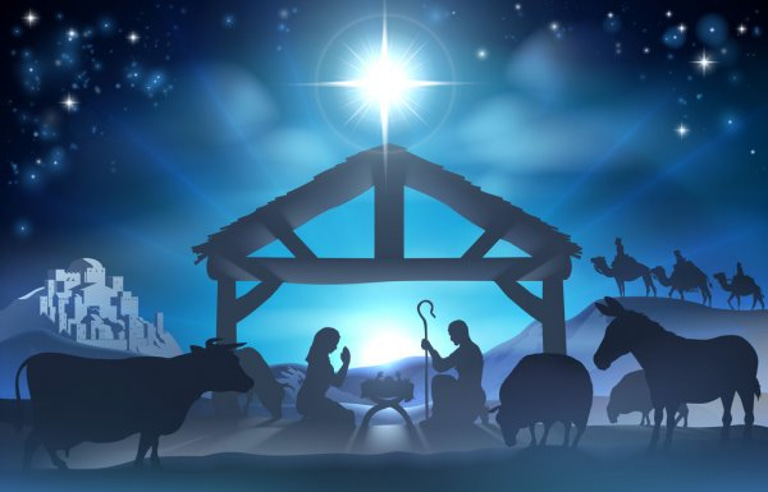Comprehensive Guide to Nativity Traditions Around the World
Want to know about global Christmas traditions? Learn about Filipino lanterns & African Timkat. Explore diverse nativity celebrations! Start reading now.
Grace Callahan
3/2/202524 min read
FAQ: Global Nativity Traditions
1. How is the Nativity celebrated differently around the world?
Nativity celebrations vary widely across cultures. In the Philippines, vibrant parol lanterns and early morning Simbang Gabi Masses highlight hope and devotion. In Mexico, Las Posadas reenact Mary and Joseph's search for lodging, while Ethiopia’s Timkat focuses on Christ’s baptism with grand processions and water blessings.
2. What are some unique Nativity customs in Africa and the Middle East?
Ethiopians celebrate Timkat with sacred rituals and water blessings, and Nigerians mark Christmas with carols, dramatic Nativity plays, and community feasts. Middle Eastern Christians, like Copts and Maronites, emphasize midnight Masses, fasting, and symbolic foods to preserve centuries-old traditions.
3. How do other religions and cultures connect with the Nativity story?
Islam honors Jesus’ virgin birth and Mary’s piety but sees him as a prophet, not divine. Winter holidays like Hanukkah, Kwanzaa, and Yule also celebrate light, hope, and renewal. Folk traditions like Catalonia’s Caganer and Italy’s La Befana blend humor and legend with the Nativity narrative.
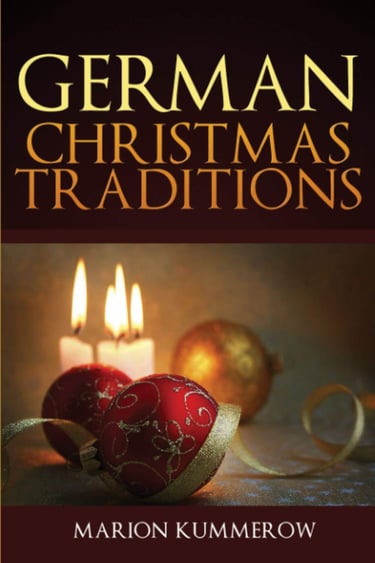

Introduction:
The Nativity story, while rooted in the Christian faith, is celebrated across the world in unique and varied ways. From the vibrant parol lanterns in the Philippines to the festive reenactments in Mexico, the global traditions surrounding the birth of Jesus reflect rich cultural identities and history. Whether you're familiar with the grand celebrations in Europe or the more intimate gatherings in smaller communities, there’s so much to discover! This article will take you on a journey through some of the most interesting and lesser-known Nativity customs across the globe.
Nativity in Asia: Filipino ‘Parol’ Lanterns and Simbang Gabi
The Nativity celebration in the Philippines offers a vibrant and deeply spiritual take on Christmas, blending faith with unique traditions. The Filipino Christmas traditions of the parol lanterns and Simbang Gabi stand out as symbols of hope, community, and devotion. These customs offer a glimpse into the Filipino soul, where faith and celebration intertwine in a beautiful display of light and spirit.
Parol Lanterns: Symbolizing Hope, Light, and the Star of Bethlehem
When you walk through the streets of the Philippines during the Christmas season, it’s hard to miss the dazzling display of parol lanterns. These stunning lanterns, typically crafted from bamboo and colorful paper, are more than just festive decorations. They represent hope, joy, and the Star of Bethlehem that guided the Wise Men to the birthplace of Jesus.
A Beacon of Light: Parols are not just decorative; they’re symbolic beacons of light during the holiday season. For many Filipino families, these lanterns are an essential part of their Christmas decor, with homes, neighborhoods, and streets filled with them. The parol embodies the belief that Jesus, the Light of the World, brings hope in the midst of darkness.
Cultural and Spiritual Meaning: The parol also holds deep spiritual significance, especially when considered in the context of Filipino Christianity. The lantern represents the guiding light of Christ, drawing a direct connection to the Star of Bethlehem that led the Magi to the newborn Savior. Every twinkle of the parol is a reminder of the birth of hope, the promise of salvation, and the ever-present light of faith.
Artistry and Tradition: Over the years, the parol has evolved from simple designs into more intricate works of art. In some regions, parol festivals showcase the creativity and craftsmanship of local artisans, turning the lantern into a true symbol of Filipino culture during Christmas.
Simbang Gabi: A Nine-Day Novena of Dawn Masses Leading Up to Christmas Eve
One of the most beloved Christmas traditions in the Philippines is the Simbang Gabi, a nine-day series of dawn Masses that take place from December 16th to 24th. This tradition is steeped in devotion, community spirit, and the joy of anticipation as Filipinos prepare for Christmas Eve and the celebration of Christ’s birth.
A Test of Devotion: Attending Simbang Gabi is not just about going to church; it’s a sacrifice and an act of devotion. The Masses begin early in the morning, often at 4 AM, and require commitment from the faithful, many of whom rise before dawn to attend. This dedication reflects the deep faith and commitment to preparing spiritually for the birth of Christ.
Community and Celebration: While Simbang Gabi is primarily a religious observance, it is also a time for community bonding. After each Mass, Filipinos gather with family and friends to enjoy festive food such as bibingka (rice cake) and puto bumbong (purple rice cake). These delicacies, usually sold outside churches after Mass, become a comforting tradition, adding warmth to the cool mornings and reminding everyone of the joy of the season.
A Spiritual Journey: The nine days of Masses serve as a spiritual countdown to Christmas Eve, creating a sense of anticipation and preparation for the ultimate celebration. The Masses are filled with joyful hymns and prayers of thanksgiving, and they are seen as a way to prepare one’s heart for the coming of Christ.
Conclusion
The Filipino celebration of Christmas is a beautiful blend of light, faith, and community. The parol lanterns serve as a radiant reminder of the Star of Bethlehem, while Simbang Gabi invites believers to prepare spiritually for the birth of Jesus, fostering a deep sense of devotion and connection to one another. These traditions remind us that Christmas is not just a date on the calendar—it’s a season filled with spiritual significance and joyful anticipation, illuminating not just homes, but hearts.
African Nativity Traditions: Ethiopian Timkat and Nigerian Christmas Customs
Christmas in Africa is celebrated in distinct and culturally rich ways, highlighting the continent’s deep religious devotion and vibrant community spirit. Ethiopian Timkat and Nigerian Christmas customs offer a window into how different cultures honor the birth of Christ and bring people together in festive and deeply spiritual ways.
Ethiopian Timkat: A Deeply Spiritual Celebration Marking the Baptism of Christ
In Ethiopia, the Christmas season culminates in the celebration of Timkat, a festival that honors the baptism of Jesus Christ in the Jordan River. While Christmas is celebrated in Ethiopia, Timkat on January 19th (or 20th in leap years) takes on a central role in Ethiopian Orthodox Christianity, blending deep spirituality with vibrant public rituals.
A Sacred Procession: Timkat is marked by grand processions, where priests and faithful walk to the nearest body of water, often a river or a specially designated pool. They carry tabots, sacred replicas of the Ark of the Covenant, draped in rich cloth. The procession represents the journey of Christ and the holy mysteries of His baptism. It is both a commemoration of Christ's act and a reenactment of the public revelation of His divinity.
Immersion and Blessing of Water: Central to Timkat is the blessing of water, where clergy immerse themselves in the water or sprinkle it on the congregation, symbolizing spiritual renewal and baptism. For Ethiopians, Timkat is a moment to reaffirm their faith and receive blessings for the coming year. This is a deeply personal yet communal experience that connects each person to Christ’s divine nature, emphasizing renewal and purification.
Vibrant Festivities: Beyond the rituals, Timkat is a time of joyous celebration. Ethiopian communities come together for feasts, dancing, and the playing of traditional instruments. The whole event takes on a jubilant character, with families and communities sharing in the joy of Christ’s baptism and the revelation of His divine mission. It's a moment of unity, where faith and festivity beautifully intertwine.
Nigerian Christmas: Festive Feasts, Carol Singing, and Dramatic Plays About the Nativity
In Nigeria, Christmas is celebrated with an enthusiasm and vibrancy that reflects the country's diverse cultures and deep Christian faith. From grand feasts to carol singing, the celebrations bring people together in joyous unity. But what really stands out in Nigerian Christmas customs are the dramatic reenactments of the Nativity story and the sense of community that permeates the entire season.
Family and Community Feasts: Christmas in Nigeria is known for its lavish feasts, where families gather to share a variety of dishes, including jollof rice, goat meat, and pounded yam. Food plays a central role in Nigerian Christmas celebrations, symbolizing abundance and togetherness. The communal nature of these meals reflects the importance of family and unity in Nigerian culture.
Carol Singing and Church Services: Much like other parts of the world, carol singing is an integral part of Nigerian Christmas. Churches hold special services filled with joyous hymns and praise for the birth of Christ. The excitement is palpable, with young and old joining in the music, not just to sing but to worship together as a community. These services are often followed by outdoor celebrations in the community, where people greet each other with well-wishes, and the streets are alive with laughter and music.
Dramatic Plays and Nativity Reenactments: In Nigerian communities, it’s common to see dramatic plays and Nativity reenactments performed by children and adults alike. These performances bring the story of Christ’s birth to life, often incorporating local traditions and African storytelling styles. The Nativity plays aren’t just for entertainment; they serve as teaching moments for children and adults to reflect on the meaning of Christ’s birth and its relevance to their lives.
Joy and Generosity: Nigerian Christmas is also about generosity. Families open their homes to neighbors, friends, and extended family, and the spirit of giving is evident in the exchange of gifts, food, and hospitality. It’s a season for sharing blessings, reinforcing the idea of community and the Christian call to love one another.
Conclusion
The Christmas traditions of Ethiopia and Nigeria reflect the rich diversity of African Christian celebrations. Timkat in Ethiopia is a deeply spiritual experience, marked by rituals, processions, and community celebrations, while Nigerian Christmas shines through its feasts, carol singing, and dramatic Nativity reenactments. Both traditions remind us of the universal message of Christmas—the birth of Christ—celebrated in ways that honor faith, community, and joy. Whether through the solemnity of Timkat or the vibrancy of Nigerian festivities, these African traditions showcase the global nature of the Nativity story and its profound impact on cultures across the world.
Posadas in Mexico: Reenacting Mary and Joseph’s Search for Lodging
In Mexico, the Posadas are one of the most cherished Christmas traditions, deeply rooted in the country’s Catholic faith and cultural heritage. This reenactment of Mary and Joseph's search for shelter during their journey to Bethlehem is not just a simple play but a vibrant, spiritual celebration that brings families and communities together in a shared expression of faith, hospitality, and joy.
Reenactment of the Journey: Families and Communities Come Together
The Posadas tradition spans the nine days leading up to Christmas Eve (from December 16th to 24th), symbolizing the nine months of Mary’s pregnancy with Jesus. The reenactment begins each night when families or groups of people go from house to house, playing the roles of Mary and Joseph. They go door-to-door, seeking shelter, just as the Holy Family did in Bethlehem.
A Journey of Faith and Hope: At each door, the group is denied entry at first, just like Mary and Joseph were turned away from inns in Bethlehem. But the rejection is part of the ritual, symbolizing the struggle that Mary and Joseph endured. When the group finally arrives at the "inn" (a friend or neighbor’s house), they are welcomed with warmth, food, and a celebration of hospitality—reflecting the joyful arrival of Christ in the midst of adversity.
Community Spirit: The Posadas are a deeply communal experience. It’s not just about the story; it’s about coming together as a community to recreate a significant moment in the Nativity. It’s a time for families, neighbors, and even strangers to bond over shared prayers, songs, and hospitality. The songs sung during the Posadas, often in the form of call-and-response, express the longing for the arrival of Christ, creating a sense of anticipation as the Advent season progresses.
Food, Music, and Prayers: After each night’s reenactment, the group gathers to share food, music, and prayers. Common foods served during the Posadas include tamales, buenos (sweet pastries), and hot chocolate—delicious treats that represent nourishment and blessing. Traditional Mexican music, such as villancicos (Christmas carols), fill the air, adding to the joyous atmosphere. The prayers said throughout the Posadas are often filled with gratitude and a deep sense of connection to the Christmas story, reinforcing the spiritual meaning behind the festive celebration.
Cultural Significance: The Posadas Highlight Themes of Hospitality, Faith, and Community Bonding
The Posadas carry profound cultural and religious significance in Mexico, reflecting essential values such as hospitality, faith, and community bonding. These themes are not just part of the Nativity story; they are deeply woven into the fabric of Mexican culture.
Hospitality and Generosity: The theme of hospitality is central to the Posadas. The welcoming of Mary and Joseph into homes symbolizes God’s love and the idea that we should open our hearts and homes to others. In a society where family and community are so highly valued, the Posadas reinforce the importance of sharing and welcoming others, especially during times of need.
Faith and Perseverance: The Posadas also highlight the faith and perseverance that Mary and Joseph demonstrated on their journey. Even when turned away, they remained hopeful, trusting in God’s plan. This message of trusting in God through difficult times resonates deeply with participants, especially in a country where faith plays such a crucial role in daily life.
Community and Togetherness: At their core, the Posadas are a celebration of community. It’s a chance for people to come together, support one another, and remember the importance of being united in faith. In a busy world, the Posadas slow down the rush of daily life and invite people to connect deeply with each other, their faith, and the Christmas story.
Conclusion
The Posadas are more than just a Christmas tradition in Mexico; they are a profound expression of faith, hospitality, and community. Through the reenactment of Mary and Joseph’s search for lodging, families and communities come together to celebrate the true meaning of Christmas—the birth of Christ and the unconditional love that He represents. With each prayer, song, and shared meal, the Posadas create lasting bonds, reminding all who participate of the importance of faith, love, and unity during the Advent season.
Orthodox vs. Western Celebrations
Eastern Orthodox Christmas (Jan 7) vs. Western (Dec 25): Key Differences
Calendar Variations: The difference in dates due to the Julian vs. Gregorian calendar, with Orthodox Christians celebrating Christmas on January 7.
Fasting & Feast Days: Distinct fasting traditions leading up to the feast of Christmas in the East, versus the often more elaborate Christmas Eve feasts in Western celebrations.
Epiphany as Theophany in the East: A Celebration of Jesus’ Baptism, Not the Magi
For many in the West, Epiphany (January 6th) is synonymous with the visit of the Magi, wrapping up the Christmas season with the image of wise men bearing gifts to the infant Jesus. But in Eastern Orthodox Christianity, Epiphany takes on an entirely different meaning—it is called Theophany, a feast that commemorates the baptism of Christ in the Jordan River.
This difference isn’t just liturgical; it reflects two distinct theological emphases—Western Christianity highlights Christ’s revelation to the nations (through the Magi), while Eastern Christianity focuses on His divine revelation at His baptism.
Theophany: The Eastern Church’s Celebration of Christ’s Baptism
In Eastern Orthodoxy, Theophany (Θεοφάνεια) means "the manifestation of God," and it marks a pivotal moment in Christ’s life—the day He was baptized by John the Baptist in the Jordan River. Why does this matter so much?
The Trinity Revealed: Unlike the Western Epiphany, which emphasizes Christ’s kingship through the Magi’s gifts, Theophany highlights the first clear revelation of the Trinity—the Father’s voice from heaven, the Son in the water, and the Holy Spirit descending as a dove (Matthew 3:16-17).
Spiritual Rebirth: Christ’s baptism is seen as sanctifying the waters and foreshadowing Christian baptism. The feast emphasizes the theme of renewal and purification.
Major Liturgical Event: Theophany is one of the Great Feasts of the Orthodox Church, on par with Christmas and Easter.
Blessing of the Waters: A Central Theophany Tradition
A striking feature of Theophany celebrations is the Great Blessing of the Waters (Μεγάλος Αγιασμός, Megalos Agiasmos), held both inside churches and at rivers, lakes, and even seas.
Processions to Water Sources: In many Orthodox countries, clergy and believers process to a body of water, where prayers are said, and the priest throws a cross into the water.
Diving for the Cross: In Greece, Russia, and parts of the Balkans, young men dive into the freezing water to retrieve the cross, a tradition symbolizing faith, renewal, and courage.
Holy Water Blessings: The blessed water is then sprinkled over homes, churches, and even people’s businesses, signifying spiritual cleansing.
Epiphany in the West: The Visit of the Magi
In contrast, Western Christianity’s Epiphany (January 6th) focuses on the visit of the Magi (Three Wise Men), recorded in Matthew 2:1-12. The emphasis is on:
Christ’s Kingship: The gifts of gold, frankincense, and myrrh symbolize His royalty, divinity, and sacrificial death.
Revelation to the Gentiles: The Magi, as non-Jews, represent the inclusion of all nations in Christ’s salvation.
Twelfth Night & Epiphany Traditions: Western cultures mark Twelfth Night feasts, King’s Cake (Galette des Rois in France), and Three Kings Day in Spain and Latin America.
Key Differences Between Theophany (East) and Epiphany (West)
Eastern Theophany (Jan 6)
Main Focus: Baptism of Christ
Key Theological Theme: Revelation of the Trinity
Major Ritual: Blessing of waters, cross-diving, baptism-themed hymns
Liturgical Importance: One of the Great Feasts of Orthodoxy
Western Epiphany (Jan 6)
Main Focus: Visit of the Magi
Key Theological Theme: Christ revealed to the Gentiles
Major Ritual: Processions, gift-giving, Kings’ Cake
Liturgical Importance: End of Christmas season in the West
Conclusion: Two Epiphanies, One Revelation
Though East and West celebrate Epiphany/Theophany differently, both feasts emphasize the same truth—Christ revealing Himself to the world. Whether through the Magi’s visit or His baptism in the Jordan, Epiphany is a feast of divine revelation, showing different facets of Jesus’ mission.
For Western Christians, Epiphany is a call to seek Christ, as the Wise Men did. For Eastern Christians, Theophany is a reminder that Christ has come to sanctify the world, calling believers to spiritual renewal.
Nativity Traditions Among Minority Christian Communities
Nativity Traditions Among Middle Eastern Christians: Coptic, Maronite, and Beyond
The Holy Land and its surrounding regions are home to some of the world’s oldest Christian communities, each preserving ancient Nativity traditions that blend faith, history, and local culture. While Western Christmas often revolves around twinkling lights and Santa Claus, Middle Eastern Christians mark the season with deeply spiritual observances, communal gatherings, and centuries-old rituals that tie back to their heritage.
Coptic Christmas (January 7): Fasting, Midnight Mass, and a Feast of Fattah
For Coptic Orthodox Christians, Christmas is celebrated on January 7th, following the Julian calendar. The preparation is intense—a strict 43-day fast (Advent Fast or Kiahk Fast) leading up to Christmas Eve, during which Copts abstain from all animal products.
Christmas Eve: A Night of Worship and Anticipation
Midnight Mass: The heart of the Coptic Christmas celebration is the long, solemn liturgy on the night of January 6th, lasting until midnight or later. The Mass is filled with ancient hymns in Coptic and Arabic, rich with symbolism.
The Holy Bread (Korban): Special Coptic bread, called "Korban," is baked and distributed after the service, symbolizing Christ’s presence.
Christmas Day: The Feast Begins
After the long fast, Christmas Day is a time of joyful feasting, with the traditional dish fattah—a flavorful meal of rice, crispy bread, and slow-cooked meat, drenched in a garlic-vinegar sauce. Families gather, share meals, and exchange gifts, but the emphasis remains on faith and community over commercialism.
Maronite Christmas: A Blend of Middle Eastern and Catholic Traditions
The Maronite Church, an Eastern Catholic Church based primarily in Lebanon, celebrates Christmas on December 25th, aligning with the Western calendar but retaining Middle Eastern cultural elements.
Midnight Mass and Zajal Carols
Midnight Mass is a significant event, often held in ancient stone churches that have withstood centuries of history.
Traditional Lebanese Christmas carols, including "Zajal" (a form of sung poetry), fill the air, combining Biblical themes with Lebanese folklore.
Christmas Symbols Unique to Lebanon
Bonfires on Christmas Eve: Some villages light bonfires outside churches, symbolizing the shepherds’ fire as they awaited the angel’s message.
Sprouting Lentils and Wheat: Families plant lentil, wheat, or chickpea seeds in cotton in early December, allowing them to sprout by Christmas—symbolizing new life and Jesus’ birth.
Christmas in Lebanon also includes lavish family feasts, with dishes like kibbeh, roast lamb, and Meghli—a spiced rice pudding served to celebrate a newborn baby, in honor of Christ’s birth.
Other Middle Eastern Christian Traditions
While Copts and Maronites have distinct customs, other Christian communities across the Middle East have equally rich Nativity traditions:
Syriac and Assyrian Christians: These ancient Christian groups celebrate Christmas with the Bar Yohannan Fast and hymns in Aramaic, the language of Jesus.
Palestinian Christians in Bethlehem: The Church of the Nativity in Bethlehem hosts a grand Christmas procession, attended by local Christians and international pilgrims.
Iraqi Chaldean Catholics: In war-torn Iraq, Christmas is both a celebration and an act of resilience, with families gathering for Mass and traditional meals despite ongoing hardships.
Conclusion: A Testament to Faith and Perseverance
Middle Eastern Christians celebrate Christmas in ways that are deeply rooted in ancient traditions and spiritual devotion. Whether it’s the midnight Mass of the Maronites, the fasting and feasting of the Copts, or the resilience of Christians in Bethlehem and Iraq, these customs are a reminder that Christmas is about more than just festivities—it’s about faith, endurance, and the hope brought by Christ’s birth.
Keeping Nativity Traditions Alive in the Diaspora: Faith, Food, and Community
For many Middle Eastern Christians—whether Lebanese Maronites in Australia, Egyptian Copts in the U.S., or Assyrians in Europe—Christmas isn’t just about the holiday; it’s about preserving identity, heritage, and faith in lands far from their ancestral homes. In the face of assimilation, displacement, and even persecution, diaspora communities hold onto their Nativity customs as a vital link to their roots.
Liturgies and Church Gatherings: Keeping Faith at the Center
One of the strongest ways diaspora communities keep their Christmas traditions alive is through church attendance and communal worship.
Coptic Orthodox Churches in the West still celebrate Christmas on January 7, following the Julian calendar, with lengthy midnight liturgies, traditional hymns in Coptic and Arabic, and fasting observances.
Maronite, Chaldean, and Syriac churches continue to conduct Mass in Aramaic, Arabic, and Syriac, preserving the linguistic and spiritual traditions of their homeland.
In cities with large diaspora populations—Los Angeles, Sydney, London, and Toronto—churches serve as cultural hubs, not just for religious services but also for community events, Christmas feasts, and youth activities that reinforce identity.
Holiday Feasts: A Taste of Home in a Foreign Land
Food is often the most tangible way immigrants pass down culture. Even in faraway countries, diaspora families meticulously prepare traditional Christmas dishes to keep their heritage alive:
Lebanese and Maronite families in the U.S. and Australia prepare kibbeh, tabbouleh, and Meghli (a spiced rice pudding) on Christmas Eve, just as they would in Lebanon.
Egyptian Copts in Canada continue the tradition of breaking their 43-day vegan fast with a massive feast of fattah (lamb and rice dish), kahk (buttery cookies), and zalabya (honey-soaked pastries).
Iraqi Chaldeans and Assyrians in Europe still gather to eat dolma, pacha (slow-cooked lamb’s head and trotters), and kleicha (date-filled pastries), reinforcing a shared identity through food.
For many in the diaspora, Christmas dinner is not just a meal—it’s a nostalgic act of cultural survival.
Processions, Bonfires, and Community Celebrations
Some customs that originated in the Middle East are still practiced abroad, though often adapted:
Lebanese Maronites in Brazil light Christmas Eve bonfires, echoing the shepherds’ fires on the night of Christ’s birth.
Palestinian Christians in the U.S. and Canada organize nativity re-enactments and Arabic Christmas carols, bringing the spirit of Bethlehem to their new home.
Coptic Orthodox children in diaspora communities dress in white robes for Christmas Eve liturgies, just as their ancestors did in Egypt.
These traditions become more than rituals; they are acts of remembrance and resilience.
Challenges and Adaptations: Balancing Old and New
Living in Western societies poses challenges for diaspora Christians:
Calendar Conflicts: Many Orthodox and Eastern Christians celebrate Christmas on January 7, but in countries where December 25 is the official holiday, balancing work, school, and church commitments can be difficult. Some churches hold dual celebrations to accommodate younger generations.
Language Shifts: While older generations may insist on Arabic, Coptic, or Aramaic prayers, younger members often lean towards English or French, leading to a gradual blending of languages in liturgies.
Commercialization vs. Tradition: Many diaspora families struggle to maintain spiritual focus amidst Western commercialism, but churches and cultural groups reinforce traditional customs through Nativity plays, storytelling, and communal feasts.
Why It Matters: More Than Just Christmas
For diaspora Christians, maintaining their Nativity traditions isn’t just about Christmas—it’s about preserving identity, faith, and a connection to their ancestors. These customs serve as anchors in foreign lands, reminding them of who they are, where they come from, and why their faith endures.
Despite the pressures of modernity, displacement, and cultural change, the Christmas traditions of Middle Eastern Christian communities abroad remain a testament to their resilience, devotion, and deep-rooted heritage.
Interfaith & Comparative Perspectives
The Birth of ‘Isa (Jesus) in Islam: Common Ground and Key Differences
While Christianity and Islam have distinct theological views of Jesus, his birth is a fascinating point of both overlap and divergence. In Islam, Jesus—known as ‘Isa (عيسى)—is revered as a prophet and messenger of God, and his birth story, as told in the Qur’an (Surah Maryam 19:16-36), shares remarkable similarities with the Christian Nativity while also diverging in key ways.
Islam’s Nativity: A Miraculous Birth Without a Stable or Shepherds
Islam upholds the virgin birth of Jesus, emphasizing that Maryam (Mary) conceived him miraculously without any human intervention, solely by the command of Allah:
When the angel Jibril (Gabriel) appeared to Maryam, he announced that she would bear a holy son, even though she had never been touched by a man.
Instead of a stable in Bethlehem, the Qur’an describes Maryam giving birth alone in the wilderness, under a date palm tree, where she experiences severe labor pains.
God provides her with fresh dates and a stream of water for nourishment—elements deeply tied to Middle Eastern culture.
While there is no Joseph, manger, or angelic choir, the emphasis on divine intervention and Mary’s faithfulness strongly parallels Christian tradition.
Maryam: A Bridge Between Christianity and Islam
One of the most striking aspects of Islamic tradition is its deep reverence for Maryam—arguably more than in some Protestant Christian traditions:
Maryam is the only woman named in the Qur’an and is mentioned more times (70+) than in the New Testament.
Surah Maryam (Chapter 19) is dedicated entirely to her, making her the only woman in Islam to have an entire chapter named after her.
She is honored as the purest of women, chosen by Allah above all others, and a model of faith and obedience.
This shared veneration creates a powerful interfaith connection, showing that Mary is not just a Christian figure but a revered figure in Islam as well.
Diverging Theologies: Prophet vs. Son of God
The biggest theological difference between the Christian and Islamic accounts of Jesus’ birth lies in his identity:
In Christianity, Jesus is the Son of God, the divine Word made flesh.
In Islam, Jesus is a prophet and messenger—one of the greatest, but still fully human.
The Qur’an explicitly rejects the idea of Jesus as divine or as the Son of God (Surah An-Nisa 4:171), emphasizing strict monotheism (Tawhid).
Despite this, both faiths recognize Jesus as
✔ A miracle worker (healing the sick, raising the dead)
✔ Born of a virgin (a divine sign)
✔ A bringer of truth and righteousness
No Crucifixion, But a Second Coming
Another major difference is the end of Jesus’ earthly life:
Christianity centers on Jesus’ crucifixion and resurrection, seeing them as the cornerstone of salvation.
Islam teaches that Jesus was not crucified but was raised to heaven by Allah, with another man taking his place on the cross (Surah An-Nisa 4:157-158).
However, both faiths agree that Jesus will return at the end of time—a rare theological point of agreement between Islam and Christianity.
Why This Matters: Interfaith Reflections on the Nativity
The birth of ‘Isa (Jesus) offers a shared spiritual touchpoint between Christianity and Islam. While doctrinal differences remain, the miraculous birth, Mary’s faith, and Jesus’ role as a righteous figure provide common ground for dialogue, respect, and mutual understanding.
For those interested in interfaith discussions, the Nativity serves as a powerful example of how two of the world’s largest religions honor the same moment in history, even as they interpret it differently.
Winter Festivities Beyond Christmas: Hanukkah, Kwanzaa, and Yule
While Christmas dominates the holiday season, it’s not the only festival bringing light, warmth, and togetherness during the darkest time of the year. Hanukkah, Kwanzaa, and Yule—though rooted in different cultural and religious traditions—share powerful themes of hope, renewal, and community that resonate across faiths and backgrounds.
Hanukkah: The Festival of Lights and the Triumph of Faith
Hanukkah, the Jewish Festival of Lights, often overlaps with Christmas, but it has a very different historical and religious foundation:
It commemorates the rededication of the Second Temple in Jerusalem after the Maccabean Revolt (2nd century BCE).
The central miracle? A small amount of oil, enough for just one night, burned for eight days—a powerful symbol of divine provision and perseverance.
Families light the menorah each night, recite blessings, eat fried foods like latkes (potato pancakes) and sufganiyot (jelly donuts), and play dreidel games.
Common ground with Christmas?
✔ Both emphasize light overcoming darkness (menorah candles vs. Christmas lights).
✔ Both carry a sense of miraculous hope in difficult times.
✔ Both celebrate with family, food, and joyous gatherings.
However, unlike Christmas, Hanukkah is not a major biblical holiday in Judaism—its modern prominence grew due to its seasonal proximity to Christmas.
Kwanzaa: A Celebration of African Heritage and Community
Kwanzaa, a weeklong festival (Dec 26–Jan 1) honoring African heritage, was created in 1966 by Dr. Maulana Karenga as a way for African Americans to celebrate their cultural identity and values.
Each of the seven nights focuses on a core principle (Nguzo Saba), including unity, self-determination, collective work, and faith.
Families light the kinara (candleholder), similar to the menorah.
The celebration includes storytelling, music, dance, and a feast (Karamu) on Dec 31.
Common ground with Christmas?
✔ Strong focus on family, reflection, and gratitude.
✔ Themes of giving and strengthening community bonds.
✔ Both incorporate symbolic candle lighting as a ritual of remembrance and commitment.
Unlike Christmas, Kwanzaa is not religious—it’s a cultural celebration, and many who observe it also celebrate Christmas.
Yule: The Pagan Roots of Winter Solstice Traditions
Before Christmas, Yule was the ancient Norse and Germanic celebration of the Winter Solstice, marking the longest night of the year and the return of the sun.
Evergreens, Yule logs, and candlelight symbolized rebirth and the promise of longer, warmer days ahead.
The festival involved feasting, merrymaking, and honoring nature’s cycles—traditions that influenced modern Christmas customs.
The Yule log, originally a large tree burned for days in Nordic households, evolved into today’s Yule log cake and even the concept of the Christmas fireplace tradition.
Common ground with Christmas?
✔ Celebrates light triumphing over darkness, much like Christmas and Hanukkah.
✔ Features feasting, gatherings, and gift-giving traditions.
✔ The Christmas tree, mistletoe, and even Santa Claus have traces of Yule in their origins.
Unlike Christmas, Yule is a nature-based, pagan tradition with no connection to Christianity—though many modern Neo-Pagans and Wiccans still celebrate it today.
Why These Comparisons Matter
While Christmas is uniquely Christian, it doesn’t exist in a vacuum. Across different faiths and cultures, winter festivals share deep commonalities:
Light as a symbol of hope in the darkest time of the year.
Gathering with loved ones to reflect, celebrate, and strengthen bonds.
A sense of renewal—whether spiritual (Christmas, Hanukkah), cultural (Kwanzaa), or natural (Yule).
Recognizing these shared themes doesn’t diminish Christmas—instead, it enriches our understanding of how humanity, across time and belief systems, has always sought warmth, meaning, and connection in winter’s coldest nights.
Syncretic or Folk Elements in Nativity Celebrations
The Caganer in Catalonia: A Quirky Twist on the Nativity Scene
At first glance, a defecating figurine might seem wildly out of place in a Nativity scene—but in Catalonia, Spain, it's a beloved tradition. Meet the Caganer ("the pooper"), a small figure discreetly placed among the shepherds and Wise Men, squatting with his pants down. It’s not meant to mock the sacred moment of Christ’s birth, but rather to add a touch of humor, humility, and good fortune.
Why Is There a Caganer in the Nativity?
The tradition dates back to at least the 18th century and is deeply tied to Catalan folk beliefs.
The Caganer symbolizes fertility, prosperity, and the cycle of life—his act of relieving himself is thought to fertilize the land, ensuring a good harvest for the coming year.
While the classic Caganer is a peasant in a red cap (barretina), modern versions feature celebrities, politicians, and even Santa Claus, keeping the tradition alive with a contemporary twist.
Blending Folk Humor with Christian Tradition
For outsiders, the Caganer might seem irreverent, but in Catalan culture, it represents a down-to-earth, human connection to the Nativity. Just as shepherds and Wise Men came as they were, the Caganer is a reminder that life—messy, humorous, and real—continues even in sacred moments.
It’s a perfect example of how local traditions shape and personalize Christmas celebrations, proving that faith and fun can coexist in meaningful ways.
La Befana vs. The Wise Men: When Folk Legends Meet the Nativity
Every January 5th, Italian children eagerly await La Befana, an old woman who flies on her broomstick, delivering sweets to the good and coal to the naughty. But unlike Santa Claus, her story is deeply intertwined with the Nativity—and even overlaps with the journey of the Magi.
Who Is La Befana?
According to legend, La Befana was an old woman who declined an invitation from the Wise Men to join their journey to find the Christ Child. Later, she regretted it and set out in search of the newborn King, but she never found Him.
Now, each Epiphany Eve (January 5th), she flies over Italy, visiting children’s homes, leaving gifts in the hopes of one day finding the Christ Child.
Folk Legend vs. Biblical Tradition
La Befana represents how Christian traditions and local folklore merge, much like how Santa Claus evolved from St. Nicholas. While the Wise Men arrive with gold, frankincense, and myrrh, La Befana delivers sweets and small gifts—making Epiphany in Italy a second Christmas for children.
In a way, she mirrors the human longing for something greater. She missed her chance to meet Jesus, but her endless search reflects the journey of faith—a reminder that even the most ordinary among us are invited to seek the Divine.
It’s a fascinating example of how culture weaves itself into sacred tradition, keeping the Nativity story alive in ways that are both whimsical and profound.
Conclusion:
From the Filipino Parol lanterns that light up the Christmas season to the quirky Caganer figures in Catalonia, Nativity traditions around the world offer fascinating insights into how cultures interpret the birth of Jesus. Whether through elaborate feasts, spiritual rituals, or folk legends, the universal themes of hope, community, and faith shine through. So, how do you celebrate the Nativity in your own home?
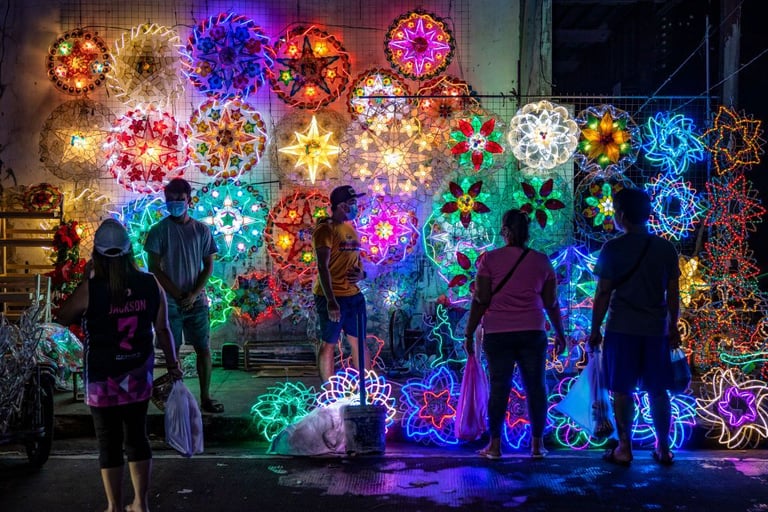

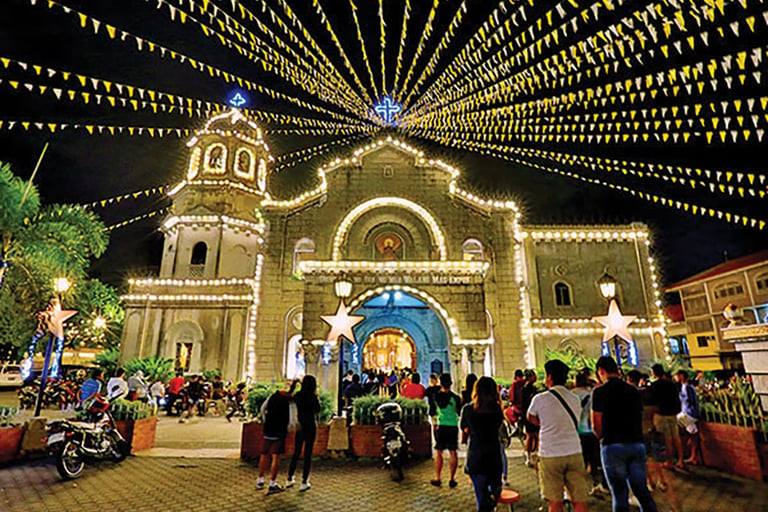

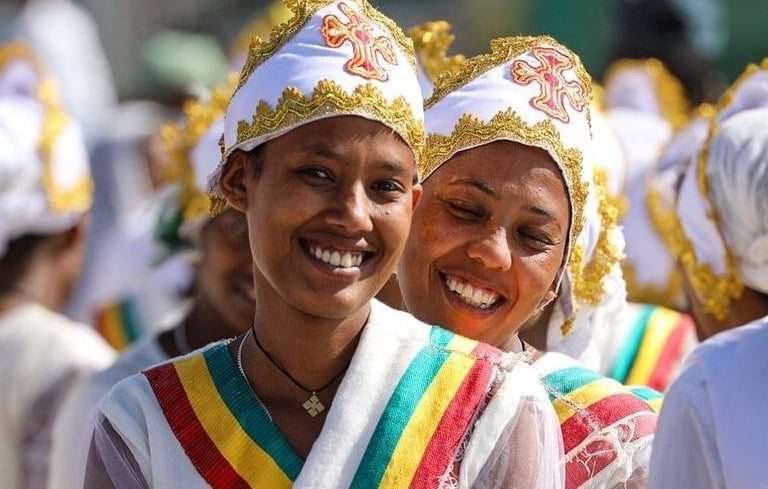

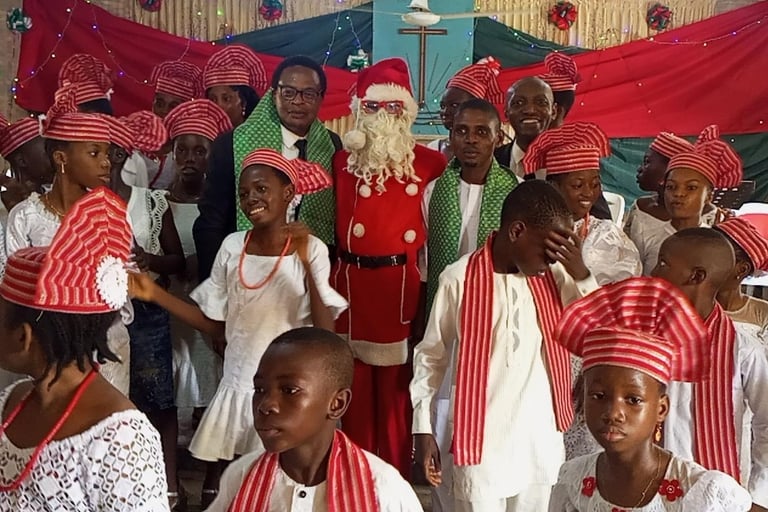

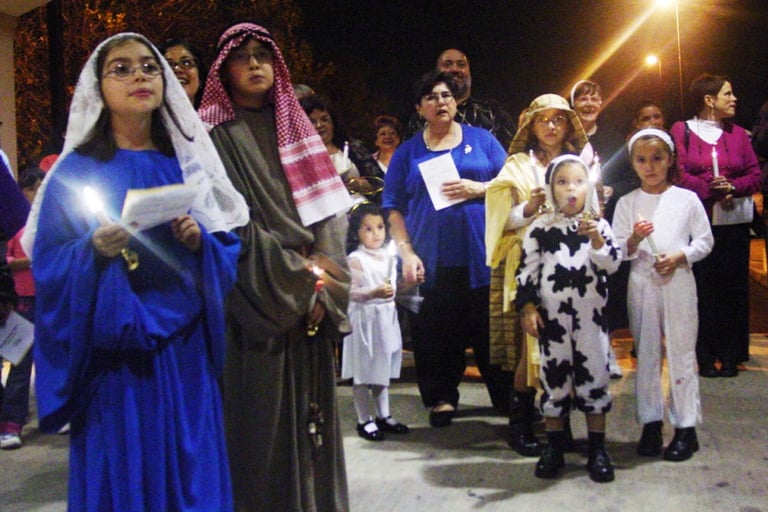

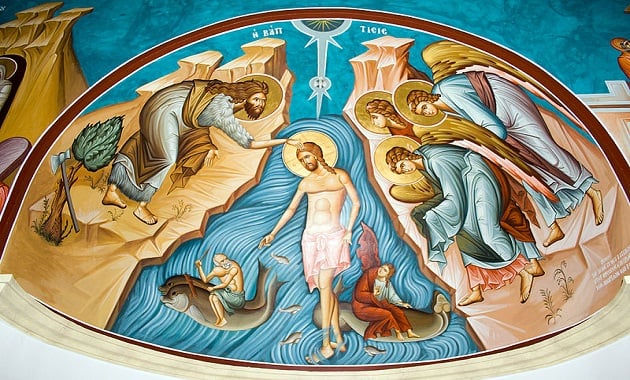

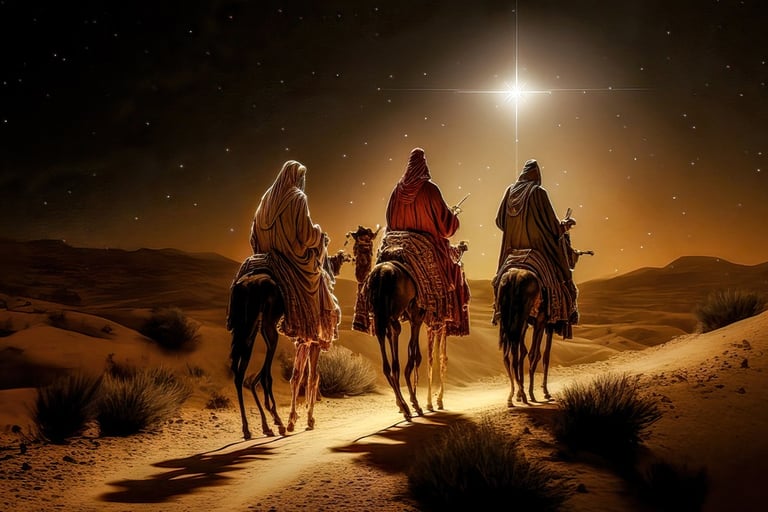

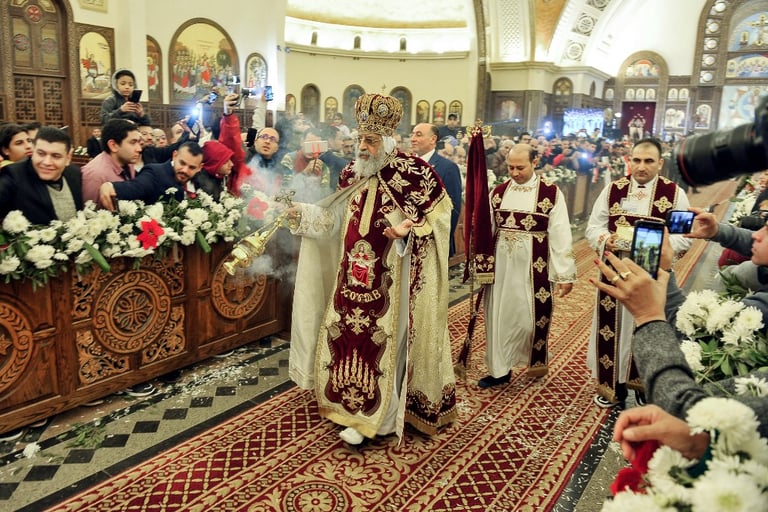

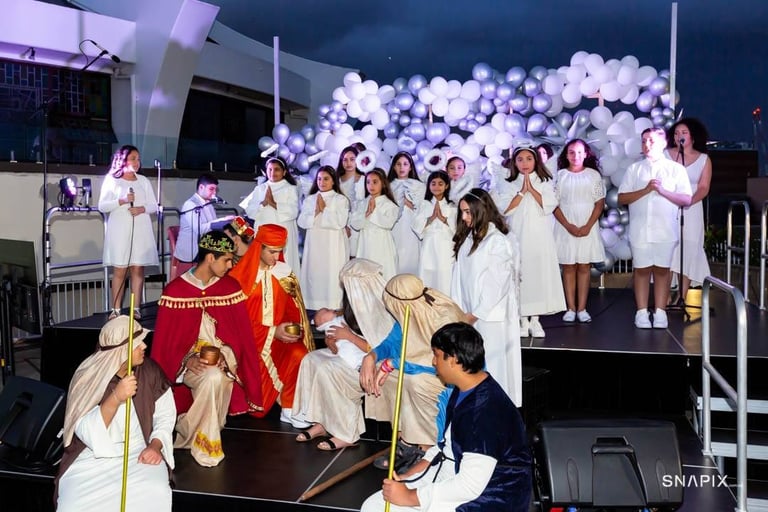

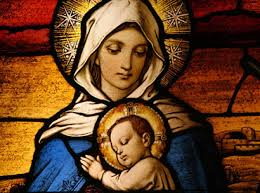

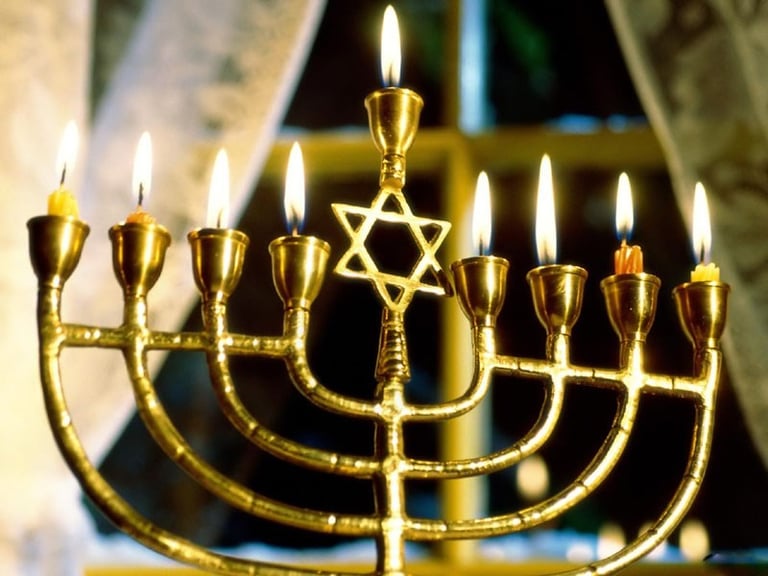

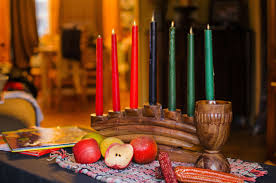

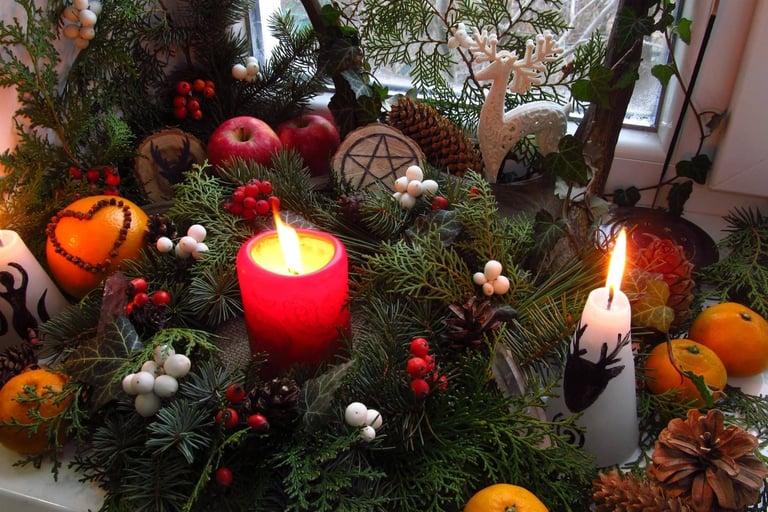

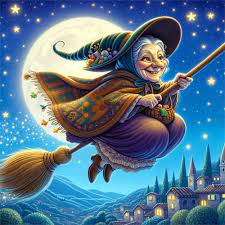

Please see these related articles:
Global Christmas: Unique Nativity Traditions Around the World
Nativity Celebrations in Eastern Europe: Traditions and Delights
Exploring Nativity Celebrations in Italy: Tradition and Festivity
Discover Rich Nativity Traditions And Cuisine of Latin America
Easy Ways to Include Spanish Traditions in Christmas Celebrations
Celebrating Diversity: Authentic Representation in the Nativity
Unveiling the Ethnic Mosaic: The Multicultural Roots of the Nativity
